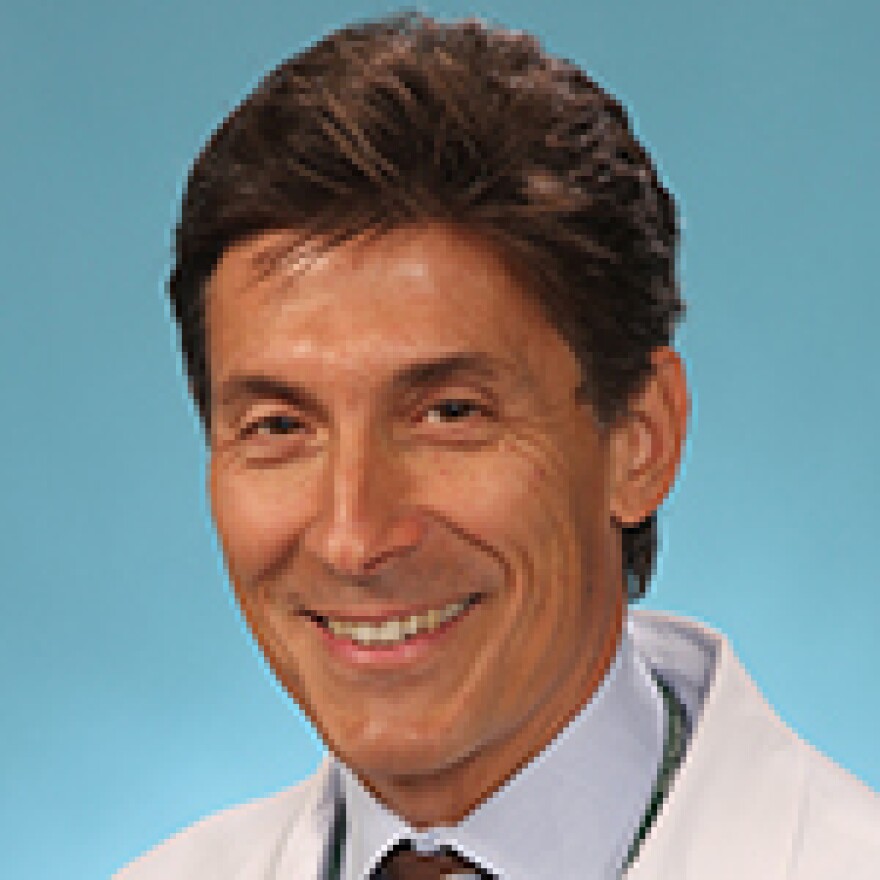Initial results of an innovative study may significantly change how some patients are evaluated after a stroke, according to researchers at Washington University School of Medicine in St. Louis.
For more than a century, physicians have made it a priority to learn where stroke has injured the brain and the extent of the damage. The new results suggest another question may be equally or more important: How has the stroke affected the ability of uninjured brain regions to network with each other?
According to senior author Maurizio Corbetta, MD, the answers to this question may help physicians more accurately predict the challenges a patient recovering from stroke may face and guide application of new approaches for accelerating recovery.
“Studying the way different brain regions connect with each other as networks appears to be a powerful way of determining the nature and location of the problems caused by stroke,” said Corbetta, the Norman J. Stupp Professor of Neurology.
The paper appears online in Brain.
Many hospitals have MRI scanners that can gather information on brain networks. The expertise needed to use this data to assess network health is less widely available, but Corbetta expects that to change as the benefits of this approach become more apparent.
“Understanding whether pathways that appear to be structurally intact are actually under- or overconnected from a networking point of view may provide targets for novel treatments,” he added. “One example is transcranial magnetic stimulation, which uses exposure to strong magnetic fields to adjust the activity levels of groups of brain cells.”
The findings come from an ongoing study of stroke patients. Most stroke research focuses on patients with damage to particular brain areas, but this study is different. Researchers are enrolling anyone who recently had a stroke for the first time.

“Our strategy is to enroll anyone with a first-time stroke, no matter where in the brain their strokes caused damage and no matter what problems the strokes have caused for the patients,” said first author AntonelloBaldassarre, PhD, now at the University of Chieti-Pescara in Italy. “We think that makes this study a more relevant representation of the problems strokes cause for patients.”
In every subject, the researchers assess the size and location of stroke damage. They use MRI scans to measure functional connectivity, or the ability of brain regions to communicate with each other in a coordinated fashion. They also check attention, vision, movement, language and memory, which often are impaired by stroke. These evaluations occur two weeks, three months and one year after stroke.
The research analyzes data gathered from 84 patients in the first five years of the study.
Scientists have long thought stroke does most of its damage in the cortex, the outer layer of brain cells where higher mental functions occur. But the results suggest stroke causes more harm to the connections in the white matter, which is underneath the cortex and connects different parts of the cortex to the cortex and the spinal cord.
“We think this is why a stroke that damages one part of the brain can seriously disrupt the function of another, distant part of the brain,” Corbetta said.
For the analysis, researchers focused on problems with spatial attention deficits, which affect 250,000 to 300,000 stroke patients in the United States each year. These impairments include an inability to notice or respond to stimuli on one side of the body. A male patient asked to shave his face, for example, might shave only one side of it.
In the patients, the researchers compared changes in functional connections with the severity of spatial attention deficits 1-2 weeks after their strokes. They also identified two groups of patients with similarly placed brain lesions. One group had developed problems with attention, while another had not.
The scientists could not differentiate between the two groups based on the physical damage to their brains. But when they tested brain networking by monitoring patients as they rested in an MRI scanner, a significant distinction emerged.
“In the patients with spatial attention problems, the connections between the left and right hemispheres of the brain were decreased in proportion to the severity of their impairment,” Corbetta said. “But those same connections were fairly normal in the group that did not have impaired attention.”
A second abnormal networking pattern also was associated with impaired attention. Regions in the damaged hemisphere of the brain that do not normally work together in networks started communicating with each other after stroke. This abnormal crosstalk was linked to increased problems with attention.
“Proper balancing of the interactions between different brain regions appears to be a key component of healthy brain function. You don’t want these interactions to increase or decrease too much, or problems will result,” Corbetta said. “Our field is developing novel strategies that may help restore these imbalances, and looking at the brain’s functional connections will help us determine where those techniques should be applied.”
This work is supported by the National Institute of Mental Health of the National Institutes of Health (NIH), grant number R01 HD061117-10.
Baldassarre A, Ramsey L, Hacker CL, Callejas A, Astafiev SV, Metcalf NV, Zinn K, Rengachary J, Snyder AZ, Carter AR, Shulman GL, Corbetta M. Large-scale changes in network interactions as a physiological signature of spatial neglect. Brain. Published online Nov. 3, 2014.
Washington University School of Medicine’s 2,100 employed and volunteer faculty physicians also are the medical staff of Barnes-Jewish and St. Louis Children’s hospitals. The School of Medicine is one of the leading medical research, teaching and patient-care institutions in the nation, currently ranked sixth in the nation by U.S. News & World Report. Through its affiliations with Barnes-Jewish and St. Louis Children’s hospitals, the School of Medicine is linked to BJC HealthCare.
This story was originally published by Washington University in St. Louis on Nov. 20, 2014.





